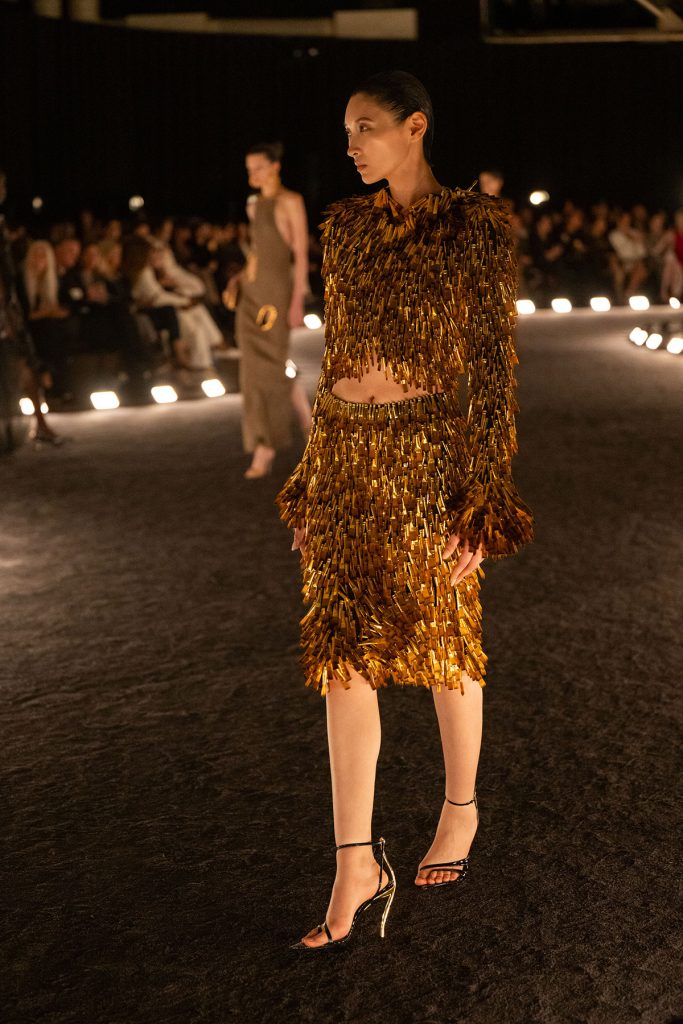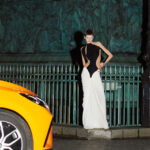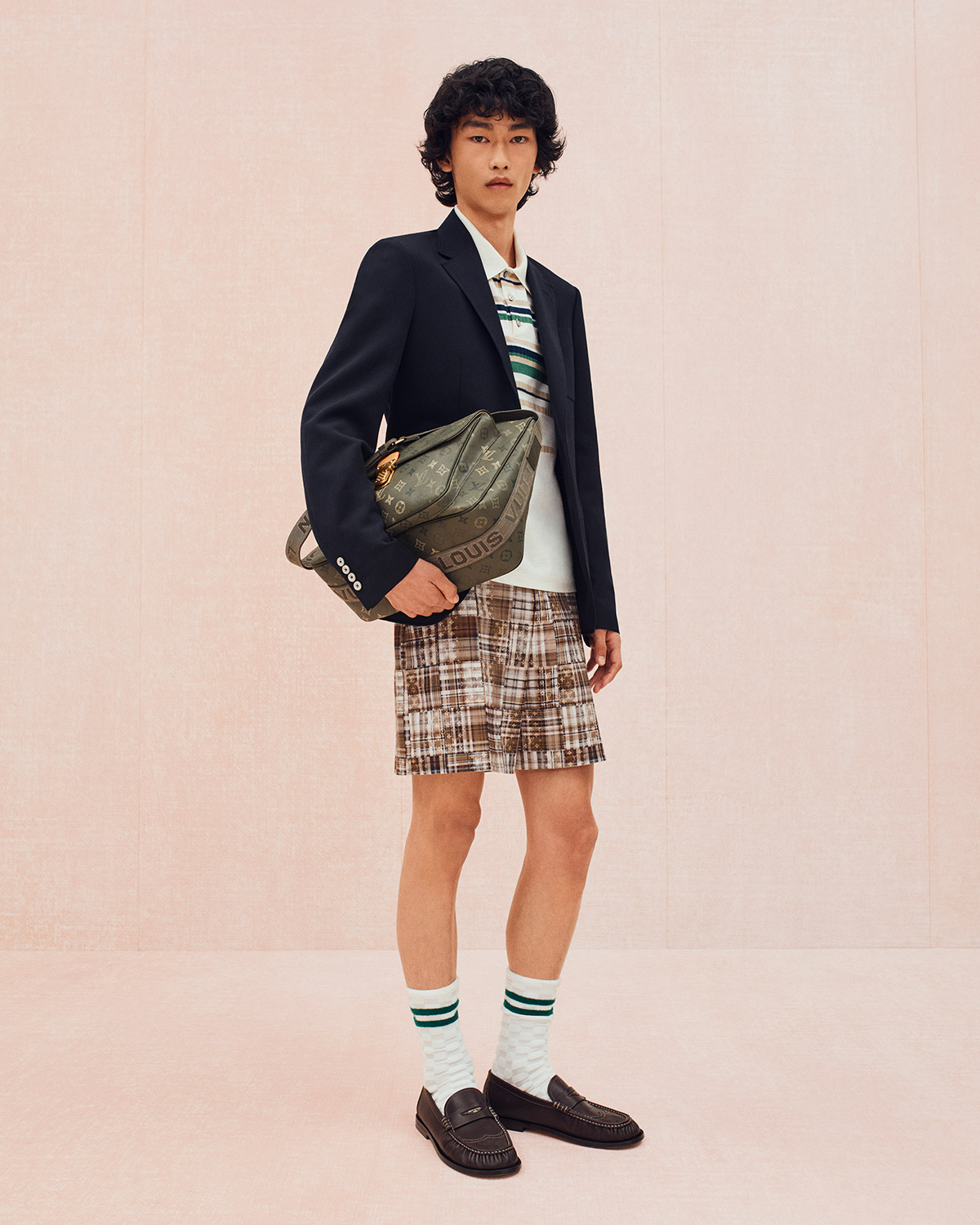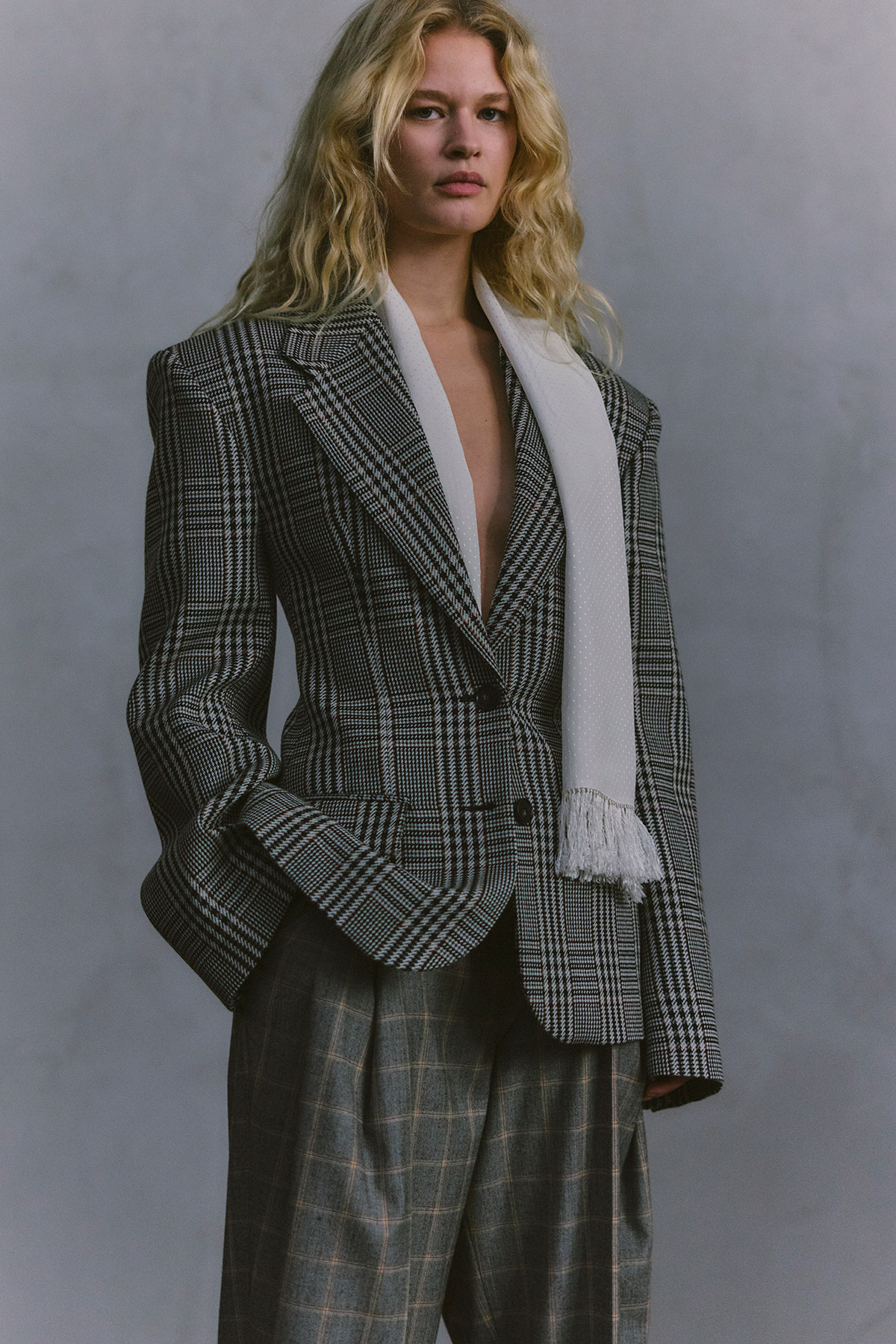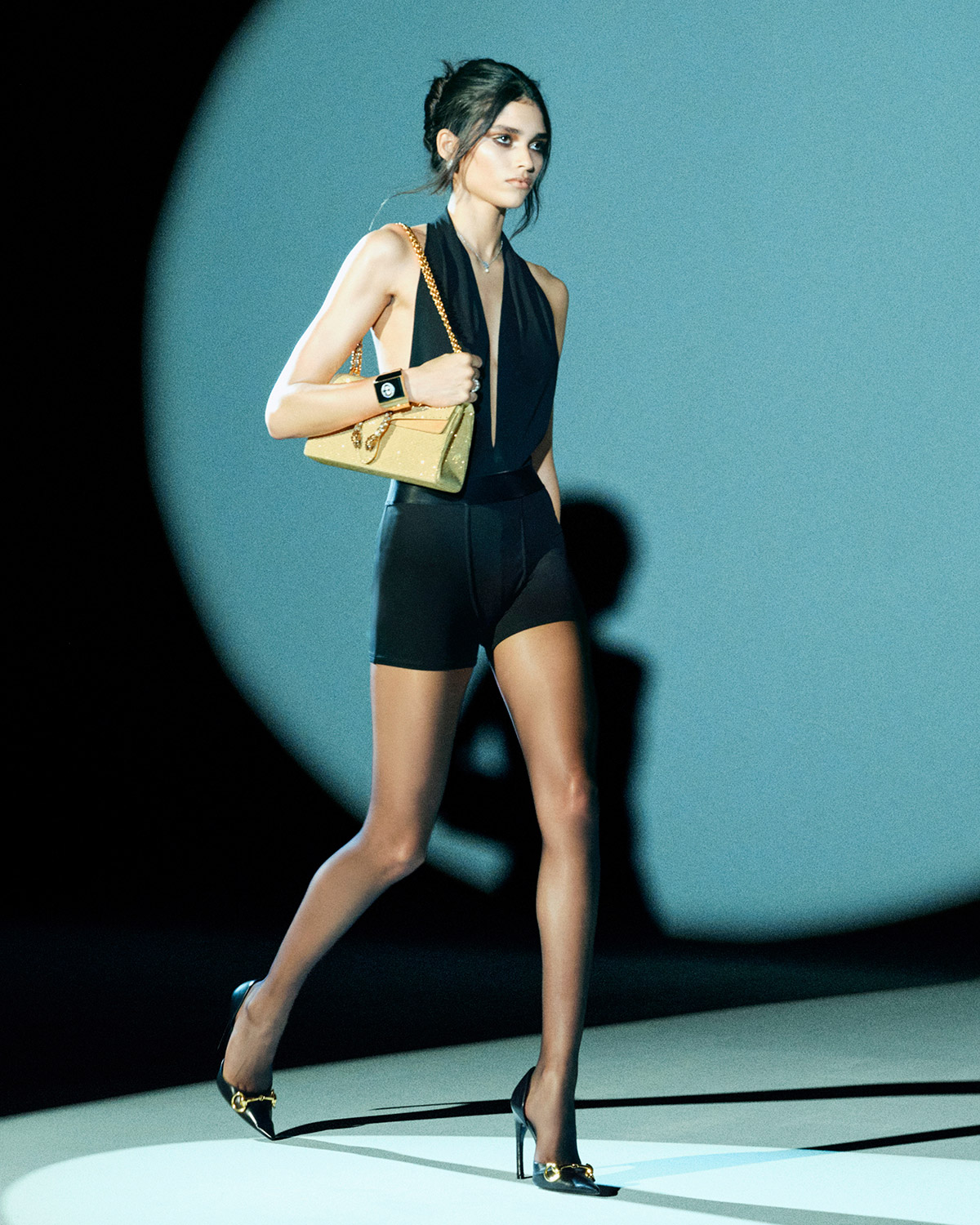For Schiaparelli Spring 2026, Daniel Roseberry argues that in a world saturated with content, genuine inspiration is the ultimate luxury.
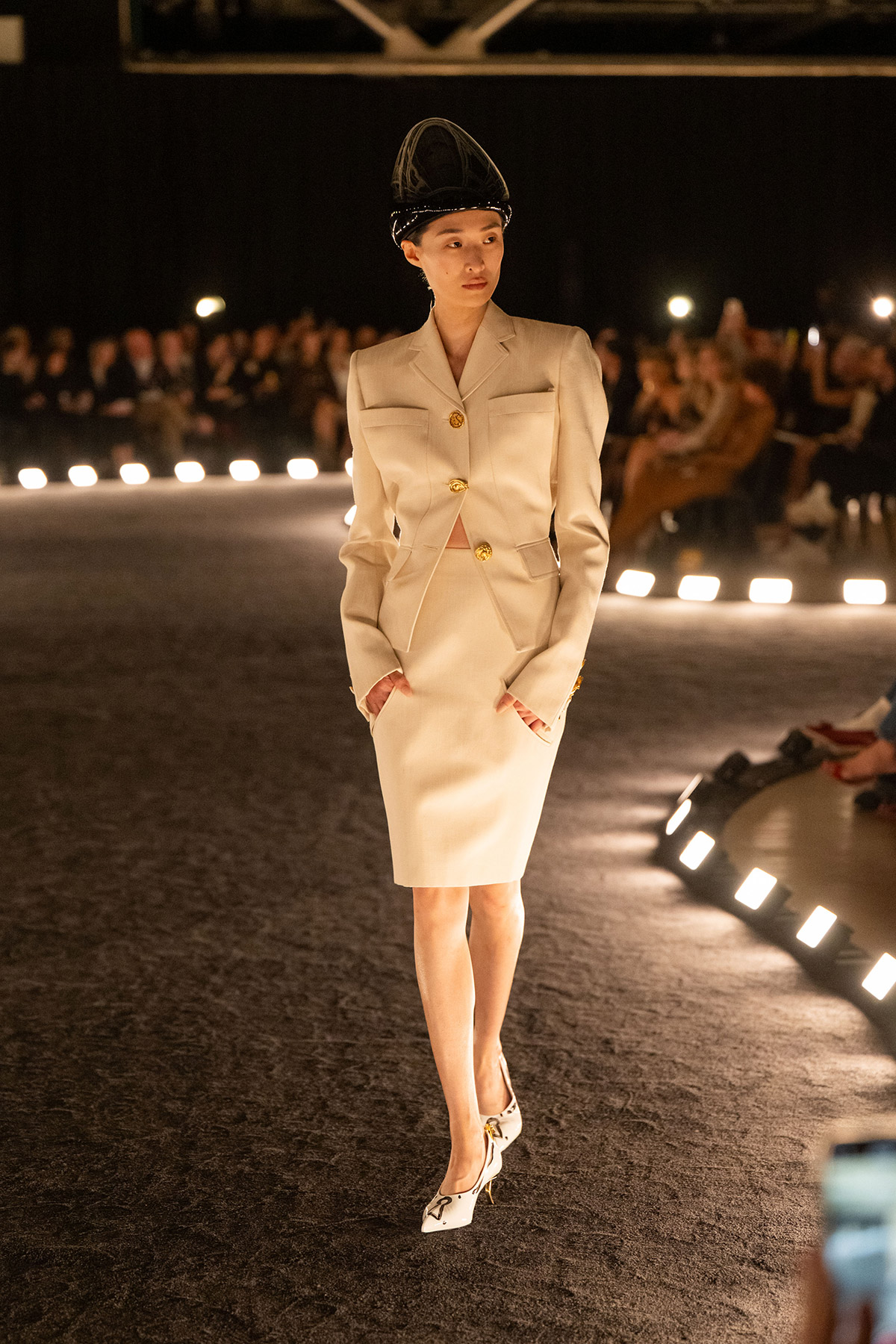
Daniel Roseberry is worried about your screen time. In a culture he describes, rather brutally, as a “slophouse of cheap thrills,” he suspects we are all tired of being merely entertained. We are desperate, he suggests, to be genuinely inspired. This stance is more than an aesthetic preference, it is a philosophical mission rooted in Roseberry’s belief that cynicism is the ultimate “enemy” of creativity.
This distinction formed the philosophical core of Schiaparelli’s Spring 2026 collection, “Dancer in the Dark,” presented at the Centre Pompidou. Drawing on a worldview influenced by his theological upbringing, Roseberry approaches his work as an “act of service,” aiming to provide a fantasy that feels not just relevant, but necessary.
Six years into his tenure, Roseberry has reignited the sparkle of the venerated house. He has achieved this by addressing the slightly panicked feedback that his ready-to-wear often trespasses into the realm of demi-couture. For Spring 2026, this perceived liability is celebrated as a core strength. Frankly, complaining that Schiaparelli ready-to-wear is “too couture” is like complaining that your diamond is too sparkly. Roseberry has effectively dissolved the boundary between the everyday and the rarefied air of the Place Vendôme salons. This collection offers a fantasy made easy for daily life.
The foundation was what the atelier calls “tailleur riguor.” This celebration of discipline, or “hard chic,” was evident in the iconic Schiaparelli jacket: sober, sharp-shouldered, and utterly devoid of grandiose flourishes. This severity extended to a series of long, lean, slip-on column gowns. The discipline in the tailoring was precise, possessing the stark elegance of a Brancusi sculpture—it’s the fashion equivalent of a very chic, very judgmental librarian. The palette was equally serious: anchored in black, cream, crimson red, silver, and signature sparks of gold.
Yet, this rigor was undermined by deliberate ruptures. The clothes recognized that feminine desire is layered—simultaneously glamorous and complex. Silhouettes were strategically punctured, creating moments of tension where flashes of skin suggested both danger and mastery.
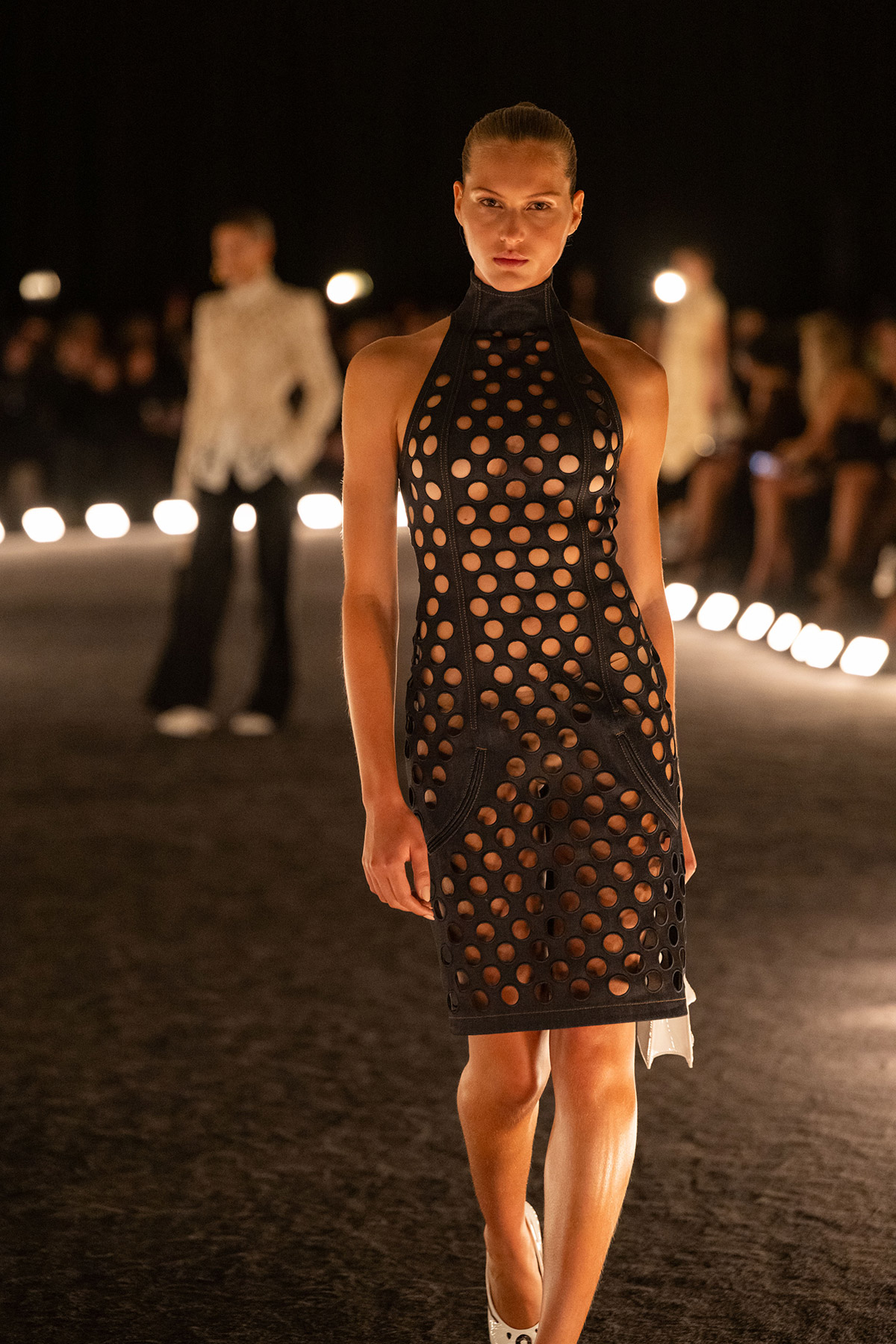
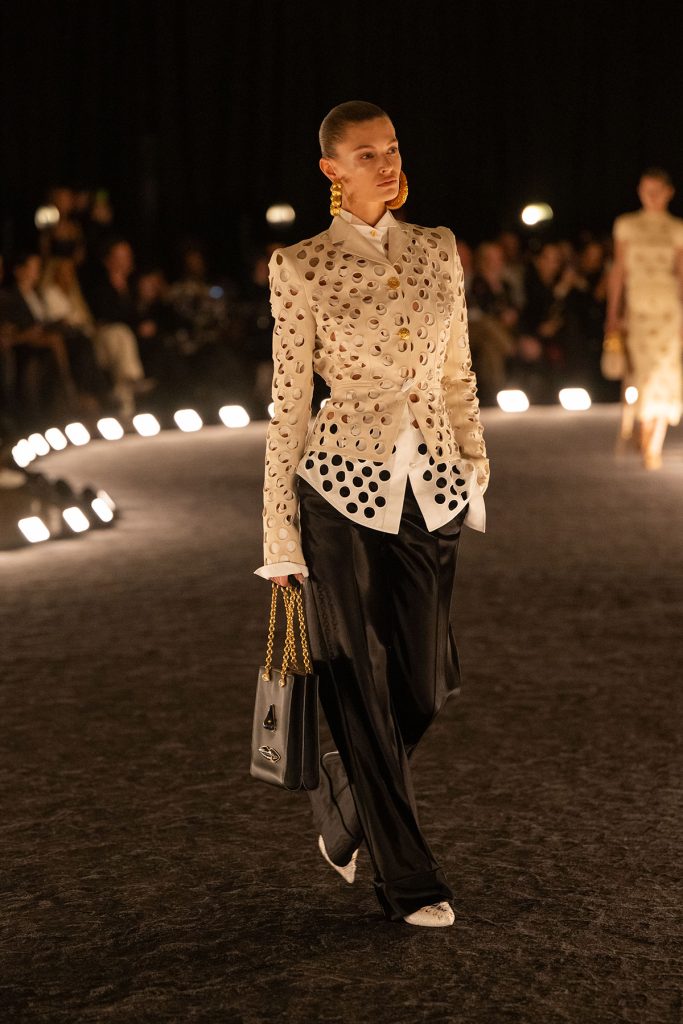
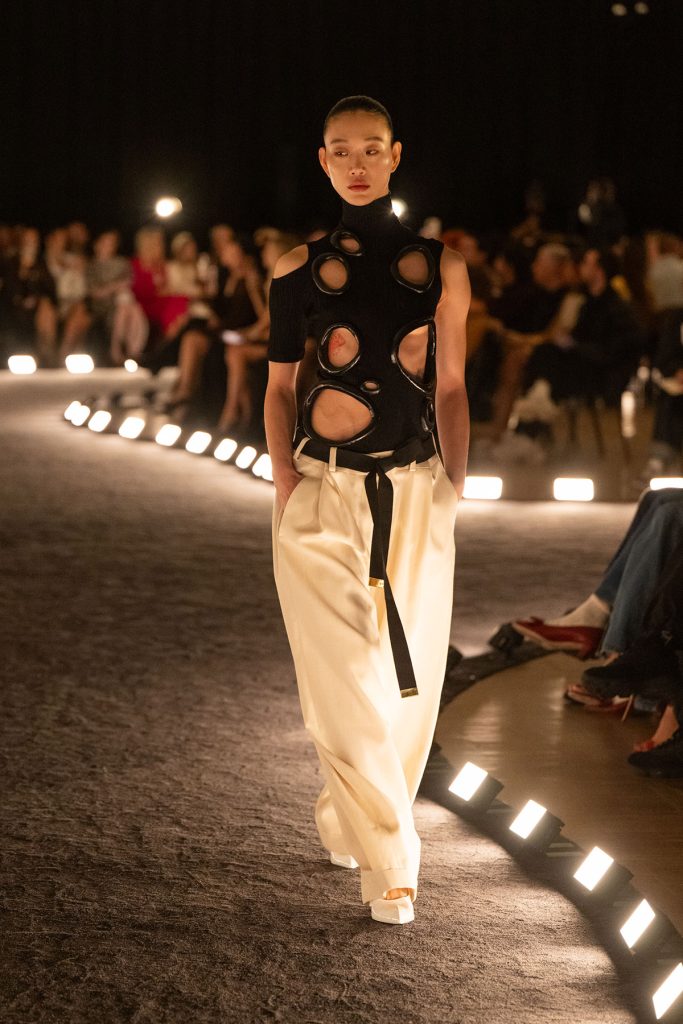
This was most evident in a series of openworked pieces. We saw this in a knee-length dress with a halter neck in raw denim, and a single-breasted slim-fit jacket in ecru heathered canvas. The jacket was layered over a tuxedo shirt in white cotton poplin featuring the same cut-outs, creating a mesmerizing, surrealistic layering effect.
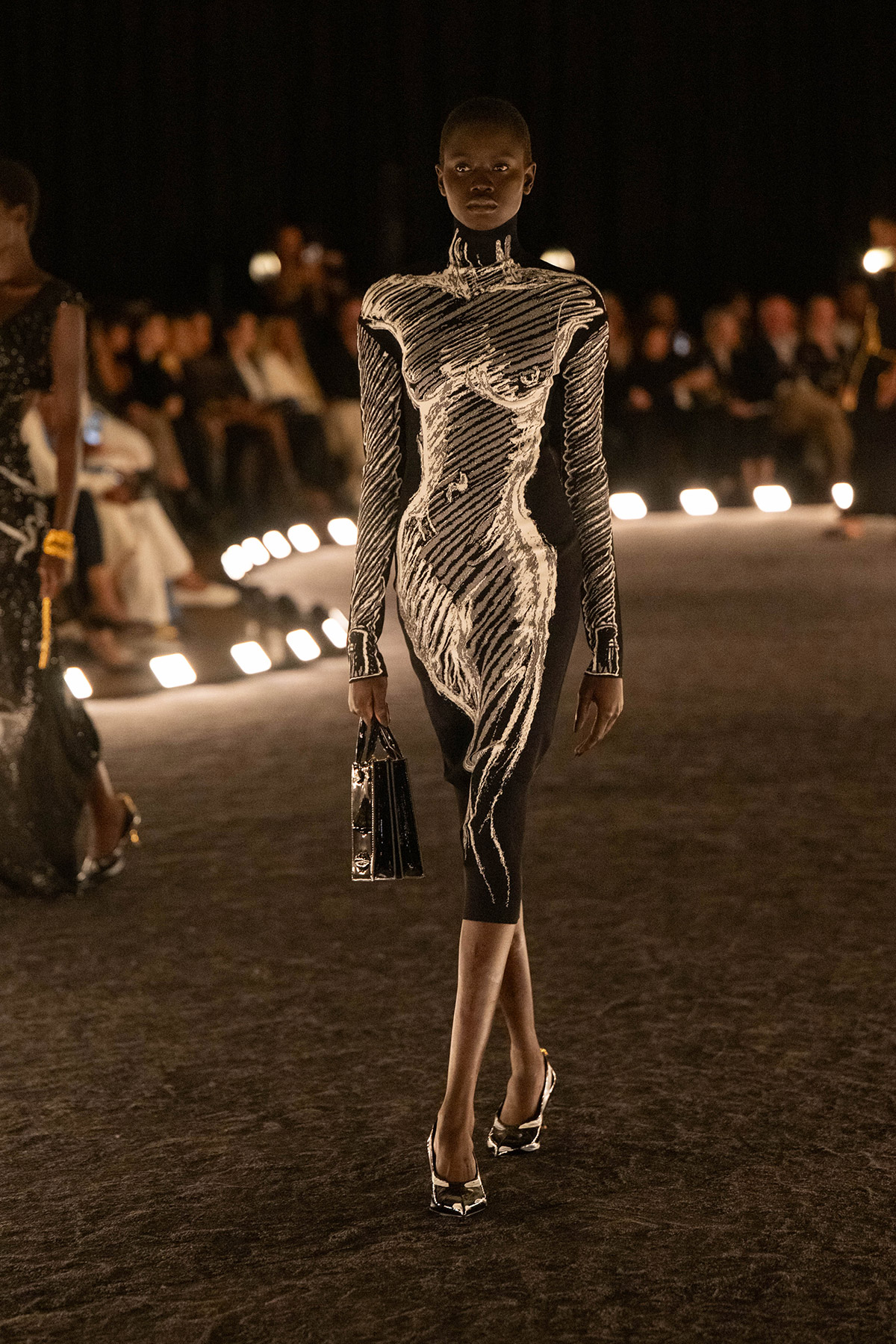
Trompe l’oeil knitwear, derived from Roseberry’s own drawings and executed in three-tone jacquards, paid tribute to Elsa’s innovative origins. A standout was the trompe l’oeil dress in black viscose jacquard knit with a drawing of a woman’s body.
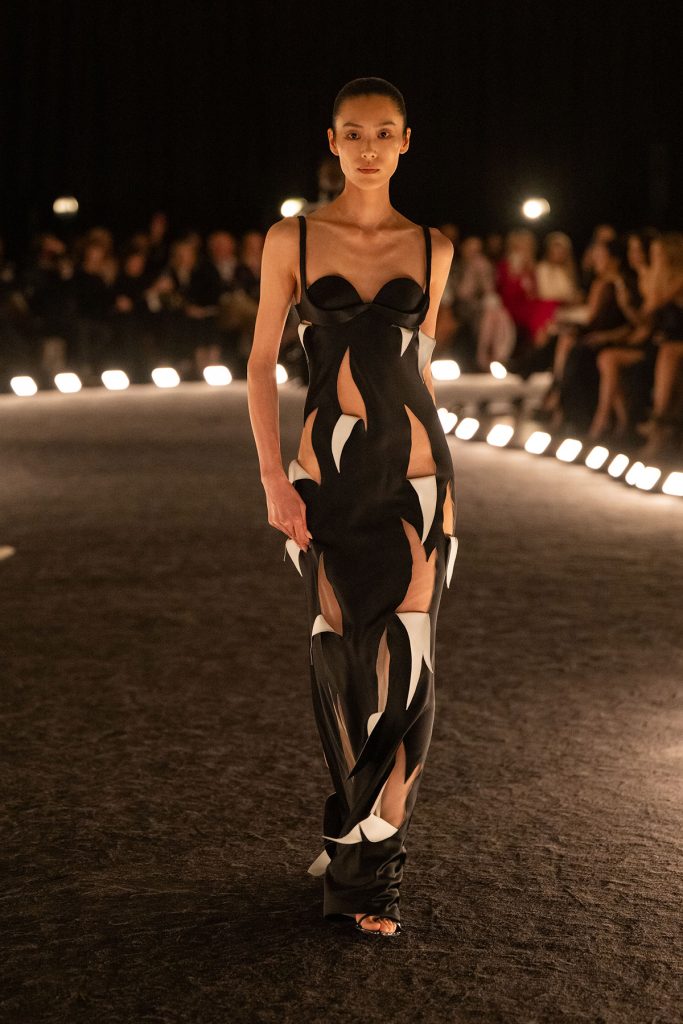
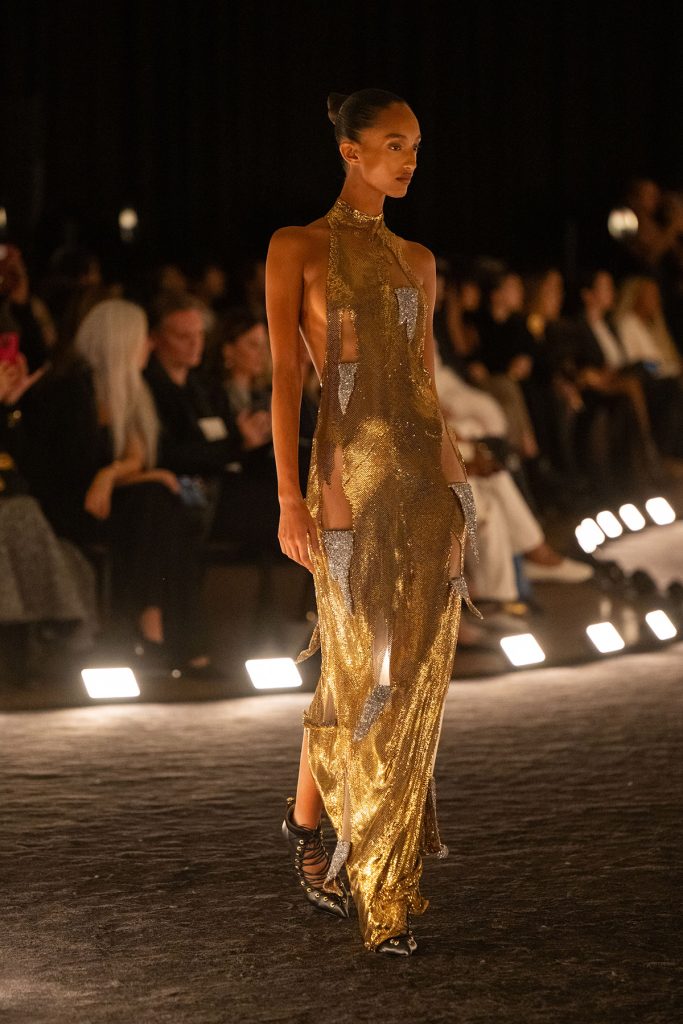
Roseberry revisited the legendary 1938 “Tear Dress,” imagined in collaboration with Salvador Dali. This appeared as a bias-cut, long, thin-strapped dress in black satin, with an integrated bra and trompe l’oeil fabric shreds with contrasting reverse. It was later reimagined in a long halter neck dress in gold metallic mesh, the reverse side of its “shreds” embroidered with crystals.
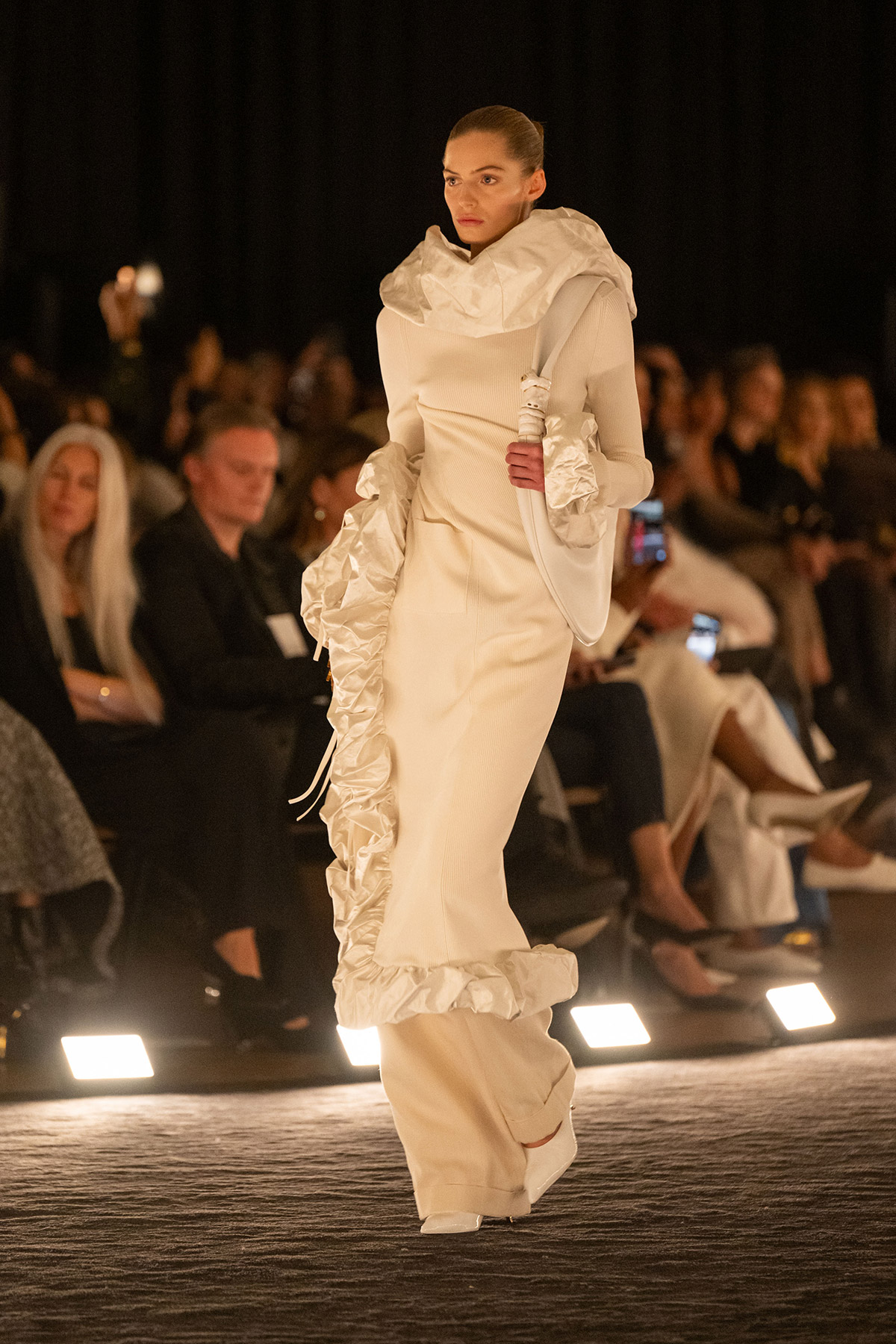
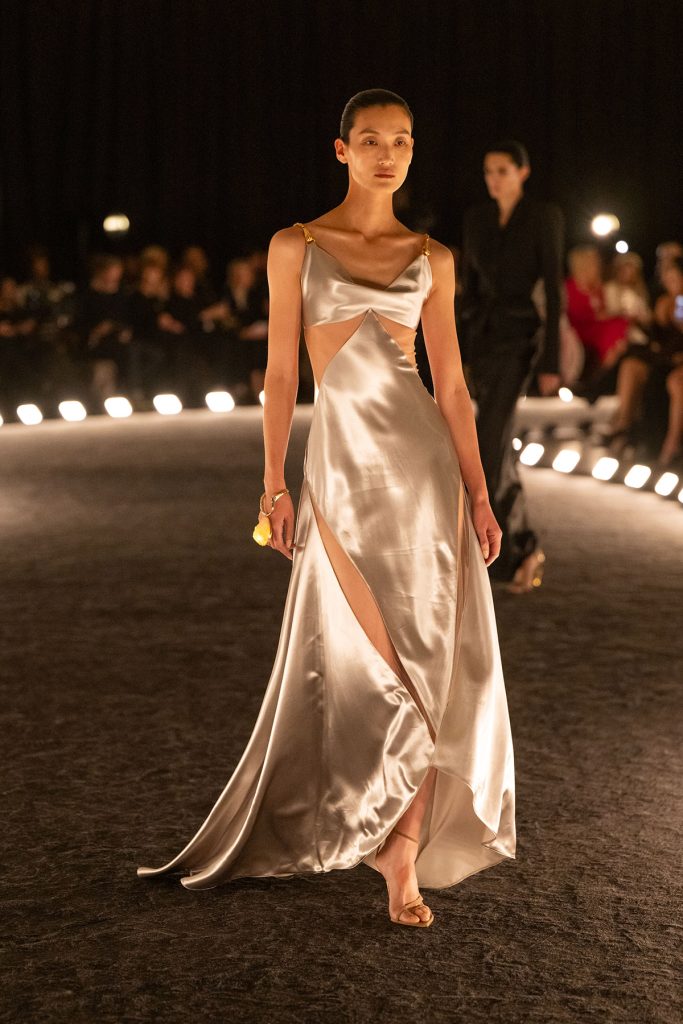
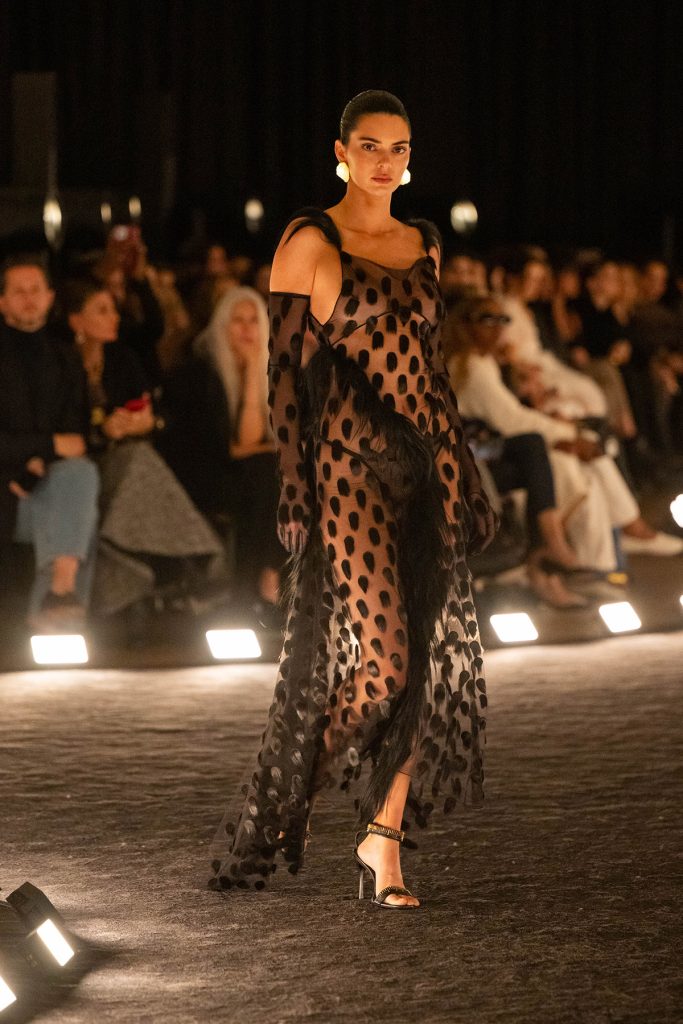
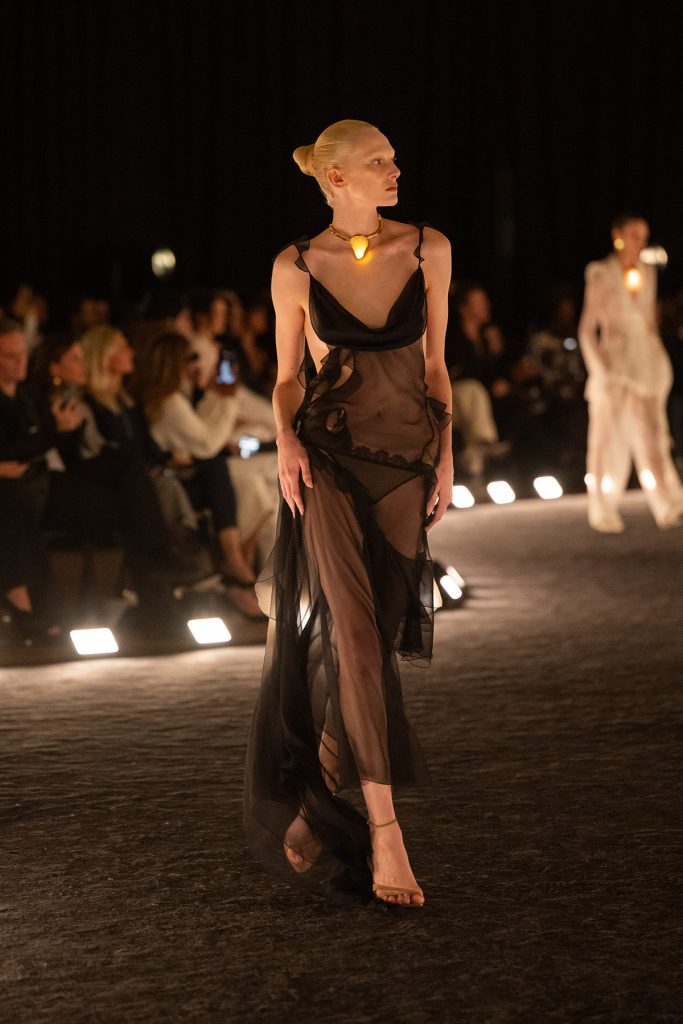
The collection balanced this sharp discipline with moments of textural extravagance. An asymmetrical dress in white viscose knit was embellished with sculptural memory satin ruffles, unconventionally paired with a matching cardigan worn inside out over the dress, and oversized pleated pants in ecru heathered canvas (16). A silver satin halter neck maxi dress featured skin-revealing tulle inserts on the sides, a bias cut, cowl neck, and gold jeweled straps (21). The exploration of texture culminated in dramatic unstructured dresses in tulle, embroidered with contrasting goat-hair polka dots and enhanced with goat fur trims.
Roseberry actively strives for “creative innocence” and rejects the easy path of cynicism. The resulting collection channels a rare sense of private liberation and the joy of being genuinely inspired.
